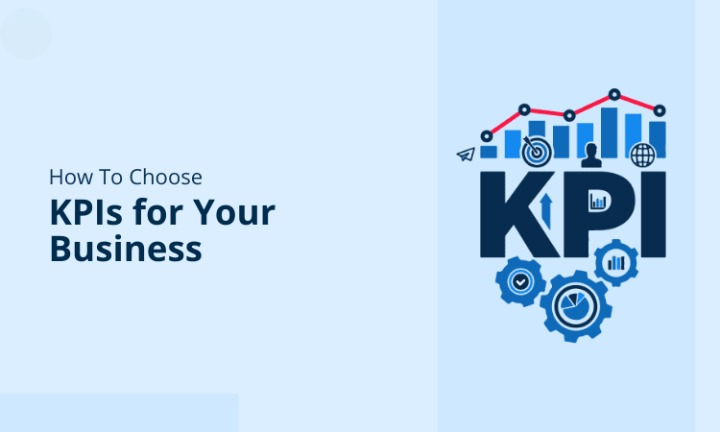How to Choose the Right KPIs for Your Business
Key Performance Indicators KPI are essential for measuring and managing the effectiveness of your business strategies. Selecting the right KPIs helps in aligning your business objectives with measurable outcomes. Here’s a step-by-step guide on how to choose the right KPIs for your business:
1. Define Your Business Goals
Overview: Start by clearly defining your business goals. KPIs should align with these goals to ensure that you measure what truly matters.
Steps:
- Set Specific Objectives: Determine what you want to achieve (e.g., increase revenue, improve customer satisfaction, enhance operational efficiency).
- Align with Strategy: Ensure that your goals are aligned with your overall business strategy and vision.
Example: If your goal is to increase sales, relevant KPIs might include sales growth rate or conversion rates.

2. Understand Your Business Processes
Overview: Gain a thorough understanding of your business processes to identify what needs to be measured.
Steps:
- Map Processes: Document and analyze your core business processes.
- Identify Critical Points: Pinpoint key areas where performance can impact your goals.
Example: For an e-commerce business, understanding the customer journey might reveal the need to measure metrics like cart abandonment rate or average order value.
3. Select KPIs That Are SMART
Overview: Choose KPIs that are Specific, Measurable, Achievable, Relevant, and Time-bound (SMART).
Steps:
- Specific: Clearly define what is being measured.
- Measurable: Ensure you can quantify the KPI.
- Achievable: Set realistic targets.
- Relevant: Align KPIs with business objectives.
- Time-bound: Establish a timeframe for achieving the KPI.
Example: Instead of a vague KPI like “improve customer satisfaction,” use “increase customer satisfaction score by 10% within 6 months.”
4. Focus on Leading and Lagging Indicators
Overview: Use a mix of leading and lagging indicators to get a complete view of performance.
Steps:
- Leading Indicators: Measure inputs or early signs of future performance (e.g., number of leads generated).
- Lagging Indicators: Measure the outcomes or results of past actions (e.g., total sales revenue).
Example: Leading indicators for a marketing campaign might include click-through rates, while lagging indicators could be the overall sales generated.
5. Involve Key Stakeholders
Overview: Engage stakeholders in the KPI selection process to ensure that the chosen KPIs reflect their needs and expectations.
Steps:
- Consult Team Members: Gather input from different departments (e.g., sales, marketing, finance).
- Align Expectations: Ensure that KPIs address the needs of all relevant stakeholders.
Example: Sales teams might prioritize KPIs related to conversion rates, while marketing teams might focus on lead generation metrics.
6. Consider Data Availability and Quality
Overview: Ensure that you have access to reliable data to measure your KPIs effectively.
Steps:
- Assess Data Sources: Identify where the data will come from and ensure its accuracy.
- Establish Data Collection Methods: Set up systems to collect and analyze data consistently.
Example: If you’re measuring customer retention, ensure you have a reliable CRM system to track repeat purchases and customer interactions.
7. Review and Adjust Regularly
Overview: KPIs should be reviewed and adjusted periodically to ensure they remain relevant as your business evolves.
Steps:
- Regular Reviews: Conduct periodic assessments of your KPIs to ensure they still align with business goals.
- Adjust as Needed: Make adjustments based on changes in business strategy, market conditions, or performance.
Example: If a new market opportunity arises, you might need to adjust KPIs to reflect new business priorities.

Conclusion
Choosing the right KPIs involves a thorough understanding of your business goals, processes, and the need for measurable outcomes. By defining SMART KPIs, focusing on a mix of indicators, involving stakeholders, and ensuring data quality, you can effectively measure performance and drive your business towards its objectives.
For expert assistance in setting up and managing KPIs, contact MyHoardings. Our team can help you identify and implement the most effective KPIs to optimize your business performance.
MyHoardings
Phone: +91-9953847639
Email: business@myhoardings.com
Website: www.myhoardings.com
Advertising Options and Rates in Indian News Paper
Ways to enhance presence over the Internet –
|



